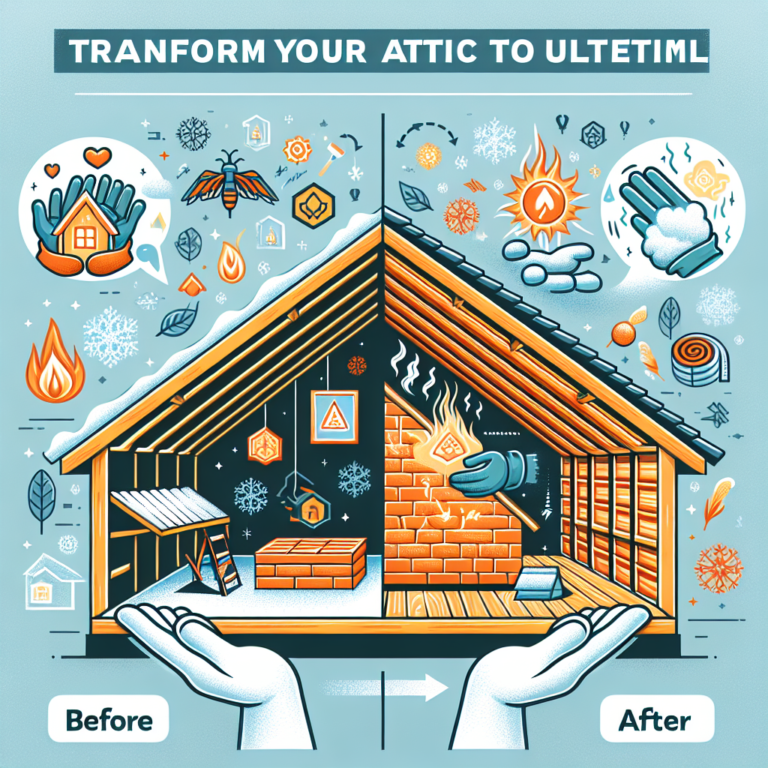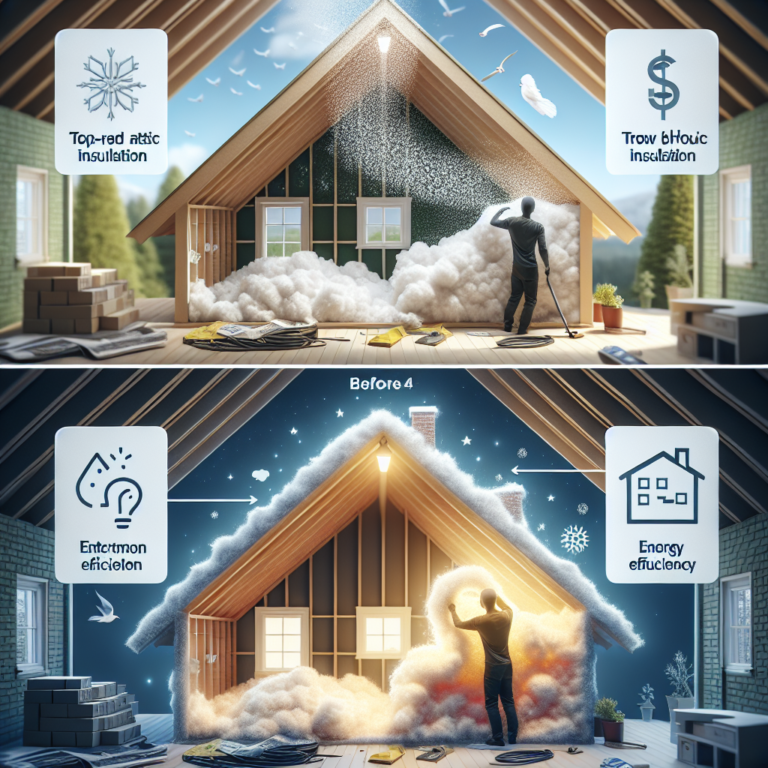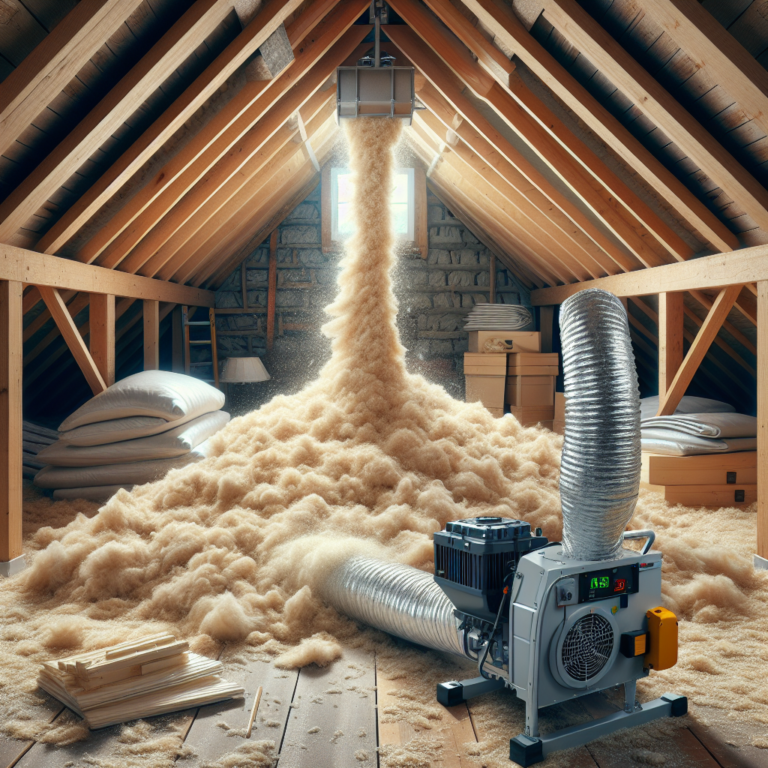Revamp Your Flat Roof with Foam Blown-In Insulation: The Ultimate Solution!
Table of Contents
1. Introduction
2. H2: Benefits of Foam Blown-In Insulation for Flat Roofs
3. H2: How to Install Foam Blown-In Insulation on a Flat Roof
4. H2: Comparing Foam Blown-In Insulation to Other Roof Insulation Types
5. Q&A
6. Conclusion
Introduction
Flat roofs deliver sleek aesthetics and functional space, but they also face unique insulation challenges. Heat gain, energy loss and sound transfer can make flat-roofed buildings uncomfortable and costly to operate. Foam blown-in insulation offers a seamless, high-performance barrier that seals every nook and cranny, cuts energy bills, reduces noise and extends roof life. In this comprehensive guide, discover why foam blown-in insulation is the ultimate solution for your flat roof and how it outperforms traditional methods.
Benefits of Foam Blown-In Insulation for Flat Roofs
1. Airtight Seal and Enhanced Comfort
• Expands on contact: liquid foam fills gaps, cracks and irregular angles.
• Prevents air leakage: reduces drafts and holds conditioned air inside.
• Maintains stable temperatures: stays effective through temperature swings.
2. Exceptional R-Value per Inch
• High thermal resistance: up to R-6.5 per inch, compared to R-3.5 for fiberglass batts.
• Requires less material thickness: ideal for limited roof cavity depth.
• Consistent performance: foam won’t settle or sag over time.
3. Superior Soundproofing
• Dense foam structure absorbs impact noise from rain, hail or rooftop equipment.
• Creates a quieter indoor environment, boosting occupant comfort and productivity.
4. Long-Term Durability
• Resists moisture and mold: closed-cell foam repels water and inhibits microbial growth.
• Adhesive bond to substrate: won’t shift or deteriorate, ensuring decades of protection.
• UV-resistant options available when paired with reflective coatings.
5. Eco-Friendly and Cost-Effective
• Made with recycled content and low-VOC formulations.
• Cuts heating and cooling demand by up to 30–40%, delivering rapid payback.
• Fewer roof repairs and energy savings reduce lifecycle costs.
How to Install Foam Blown-In Insulation on a Flat Roof
1. Preparation
• Clean and clear the roof deck: remove debris, repair cracks and ensure a dry surface.
• Mask off vents, skylights and penetrations to prevent overspray.
2. Creating Containment
• Install temporary edge barriers or tarps around roof perimeter.
• Seal perimeter gaps with tape or foam backer rods.
3. Mixing and Application
• Combine two liquid components (resin and isocyanate) in a heated spray rig.
• Apply foam at specified thickness in multiple passes, achieving uniform coverage.
• Monitor temperature and humidity for optimal expansion and curing.
4. Trimming and Finishing
• Once cured, trim excess foam flush with roof deck if necessary.
• Apply protective coatings or roofing membrane over foam to guard against UV exposure.
• Inspect seams, flashing and details to verify a continuous insulation layer.
Comparing Foam Blown-In Insulation to Other Roof Insulation Types
1. Fiberglass Batt Insulation
• Pros: low upfront cost, DIY-friendly.
• Cons: gaps between batts, susceptible to moisture, lower R-value, potential sagging.
2. Cellulose Loose-Fill Insulation
• Pros: made from recycled paper, good sound absorption.
• Cons: settles over time, less moisture resistance, lower R-value per inch.
3. Rigid Foam Board Insulation
• Pros: high R-value, stable dimensions, moisture-resistant.
• Cons: needs precise cutting, seams require taping or sealant, limited ability to conform to irregular shapes.
4. Why Foam Blown-In Insulation Wins
• Seamless air barrier eliminates thermal bridging.
• Expands to hug complex geometries and tight corners.
• Offers the best balance of R-value, longevity and moisture control.
Q&A
Q1: Is foam blown-in insulation safe for flat roofs?
A1: Yes. Modern spray foams use water or low-GWP blowing agents and meet stringent VOC standards. When properly installed and coated, they provide a safe, durable roof system.
Q2: Can foam blown-in insulation be added over existing insulation?
A2: Absolutely. As long as the existing material is dry, clean and structurally sound, foam can be sprayed on top to boost R-value and seal gaps.
Q3: How long does foam blown-in insulation last?
A3: Closed-cell spray foam can last 30–50 years when protected from UV and physical damage by roofing membranes or coatings.
Conclusion
Investing in foam blown-in insulation is the ultimate way to revamp your flat roof, delivering unmatched energy efficiency, soundproofing and durability. By creating a continuous, airtight barrier with high R-value, foam blown-in insulation slashes heating and cooling costs, enhances indoor comfort and prolongs roof lifespan. If you’re ready to seal in the savings and performance, consider foam blown-in insulation as your next roofing upgrade.












